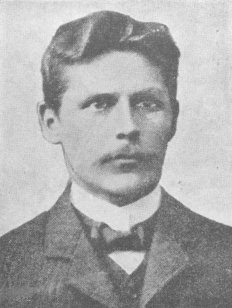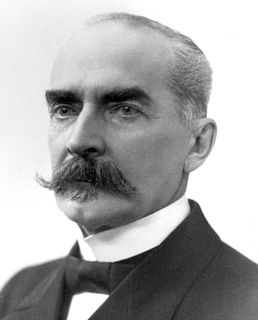Parliamentary elections were held in Finland on 17 and 18 March 1945. The broad-based centre-left government of Prime Minister Juho Kusti Paasikivi remained in office after the elections.

Parliamentary elections were held in the autonomous Grand Duchy of Finland on 15 and 16 March 1907. They were the first parliamentary election in which members were elected to the new Parliament of Finland by universal suffrage and the first in the world in which female members were elected.
Parliamentary elections were held in the Grand Duchy of Finland on 1 and 2 July 1908.
Parliamentary elections were held in the Grand Duchy of Finland on 1 and 3 July 1916.
Parliamentary elections were held in the Grand Duchy of Finland on 1 and 2 October 1917. The general voter turnout was higher than in previous elections. The Social Democrats lost the absolute majority that they had had in the previous two elections. In other words, the "bourgeois" (non-socialist) parties taken together now had more than half the seats.
Parliamentary elections were held in Finland between 1 and 3 July 1922. The Social Democratic Party remained the largest in Parliament with 53 of the 200 seats. The caretaker government of Professor Aimo Cajander (Progressive), that President Kaarlo Juho Ståhlberg had appointed in June 1922, following the resignation of Prime Minister Juho Vennola (Progressive), remained in office until Kyösti Kallio formed an Agrarian-Progressive minority government in November 1922. Voter turnout was 58.5%.
Parliamentary elections were held in Finland on 1 and 2 April 1924. Although the Social Democratic Party remained the largest in Parliament with 60 of the 200 seats, Lauri Ingman of the National Coalition Party formed a centre-right majority government in May 1924. It remained intact until the Agrarians left in November 1924. Voter turnout was 57.4%.
Parliamentary elections were held in Finland on 1 and 2 July 1927. Although the Social Democratic Party remained the largest in Parliament with 60 of the 200 seats, Juho Sunila of the Agrarian League formed an Agrarian minority government in December 1927. It remained intact until December 1928. Voter turnout was 55.8%.
Parliamentary elections were held in Finland on 1 and 2 July 1929. The result was a victory for the Agrarian League, which won 60 of the 200 seats in Parliament. Voter turnout was 55.6%.
Parliamentary elections were held in Finland on 1 and 2 October 1930. The Social Democratic Party emerged as the largest in Parliament with 66 of the 200 seats. Voter turnout was 65.9%.
Parliamentary elections were held in Finland between 1 and 3 July 1933. The Social Democratic Party remained the largest party in Parliament with 78 of the 200 seats. However, Prime Minister Toivo Mikael Kivimäki of the National Progressive Party continued in office after the elections, supported by Pehr Evind Svinhufvud and quietly by most Agrarians and Social Democrats. They considered Kivimäki's right-wing government a lesser evil than political instability or an attempt by the radical right to gain power. Voter turnout was 62.2%.
Parliamentary elections were held in Finland on 1 and 2 July 1936. Following the election Prime Minister Toivo Mikael Kivimäki of the National Progressive Party was defeated in a confidence vote in September 1936 and resigned in October. Kyösti Kallio of the Agrarian League formed a centrist minority government after Pehr Evind Svinhufvud refused to allow the Social Democrats to join the government. After Svinhufvud's defeat in the February 1937 presidential election, Kallio took office as the new President in March 1937, and he allowed the Social Democrats, Agrarians and Progressives to form the first centre-left or "red soil" Finnish government. Aimo Cajander (Progressive) became Prime Minister, although the real strong men of the government were Finance Minister Väinö Tanner and Defence Minister Juho Niukkanen (Agrarian).
Parliamentary elections were held in Finland on 1 and 2 July 1948.
Parliamentary elections were held in Finland on 20 and 21 March 1966. The Social Democratic Party (SDP) overtook the Centre Party as the largest faction in Parliament. Rafael Paasio of the SDP subsequently became Prime Minister and formed a popular front government consisting of the SDP, the Centre Party, the People's Democratic League (SKDL), and the Social Democratic Union of Workers and Smallholders (TPSL) in May 1966.
Parliamentary elections were held in Finland on 15 and 16 March 1970.
Parliamentary elections were held in Finland on 2 and 3 January 1972.
Parliamentary elections were held in Finland on 21 and 22 September 1975.
Parliamentary elections were held in Finland between 1 and 3 March 1919. The Social Democratic Party emerged as the largest in Parliament with 80 of the 200 seats. Voter turnout was 67.1%.

Indirect presidential elections were held for the first time in Finland in 1919. Although the country had declared Prince Frederick Charles of Hesse King on 9 October 1918, he renounced the throne on 14 December. The President was elected by Parliament, with Kaarlo Juho Ståhlberg of the National Progressive Party receiving 71.5% of the 200 votes. Ståhlberg, a moderate, liberal and reformist politician, who favoured improving the material well-being of workers and other economically poor Finns, received the votes of Social Democrats, Agrarians and Progressives. He also firmly supported the new Finnish Republic, and a parliamentary form of government with a strong President as a mediator and a political reserve for politically troubled times. Mannerheim, an independent right-winger and monarchist, suspected the democratic, republican and parliamentary form of government of producing too partisan political leaders, and of working ineffectively during crises. Ståhlberg favoured the signing of peace treaty between Finland and the Soviet Russia, while Mannerheim in the summer of 1919 strongly considered ordering the Finnish army to invade St. Petersburg to help the Russian Whites in that country's civil war. Only the National Coalitioners and Swedish People's Party voted for Mannerheim in this presidential election.

Two-stage presidential elections were held in Finland in 1978, the first since 1968 after Urho Kekkonen's term was extended by four years by Parliament. The public elected presidential electors to an electoral college on 15 and 16 January. They in turn elected the President. The result was a victory for Urho Kekkonen, who won on the first ballot. The turnout for the popular vote was 64.3. Kekkonen had in the spring of 1975 agreed to become the Social Democratic presidential candidate, and after that all the major Finnish political parties chose him as their candidate. Kekkonen's opponents, such as the Christian League's presidential candidate Raino Westerholm, claimed that Kekkonen's long presidency weakened the Finnish democracy. Over one-third of the Finnish voters abstained from voting, partly as a protest against Kekkonen's expected landslide victory.






